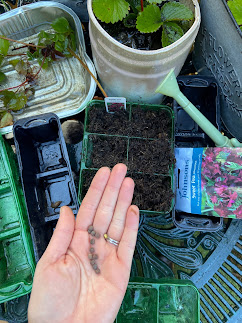Sowing Sweet Peas
You can start planting your sweet peas now! This might seem very premature, but if you start planting a few seeds now, some more over Christmas and even more on New Years day, you will have an endless supply through spring and into Summer.
The first step is to fill some pots (or empty toilet rolls!) with peat-free multi purpose compost. Sow seeds 2cm deep. The easiest way is to use the top of a pencil, place a seed into each toilet roll and cover and water the compost well. Place the seeds in a warm position, initially where temperatures are between 15-18 degrees, and wait for the seeds to germinate!
After about 10 days, shoots should to start to appear. Once shoots establish make sure you move the seedlings to a cold frame or north facing window, to avoid them becoming too leggy and encourage sturdy growth.As seedlings continue to grow and the weather continues to brighten, the seedlings will start to produce leaves. After four or five leaves have been produced, pinch off the top two leaves. This will encourage more shoots to develop and mean more flowers in Summer!
Once plants are sturdy and the weather warm, plant out into the ground or pots in late spring. Paper pots such as toilet rolls can be planted whole to avoid damaging the roots and the paper will biodegrade naturally into the soil.
As the plants continue to grow, ensure you provide something for the plants to climb, such as twiggy branches, netting or string.
This year I am going to try and grow a sweet pea wall... stay tuned to see how it turns out!
Has this inspired you to have a go at sowing Sweet Peas? Please tag me at @emmatkinsongardendesign_ on Instagram! I love seeing all of your planting journeys!



Comments
Post a Comment